In 2024, Greenland was the global travel highlight for me given my frequent travels to explore and scout for unique destinations for the discerning traveler. After having explored over 10 countries this year until August, Mongolia stood out as the most remarkable destination for 2025—a vast, raw and unforgettable land often called the Land of Eternal Blue Sky and home to the legendary Chinggis Khan.
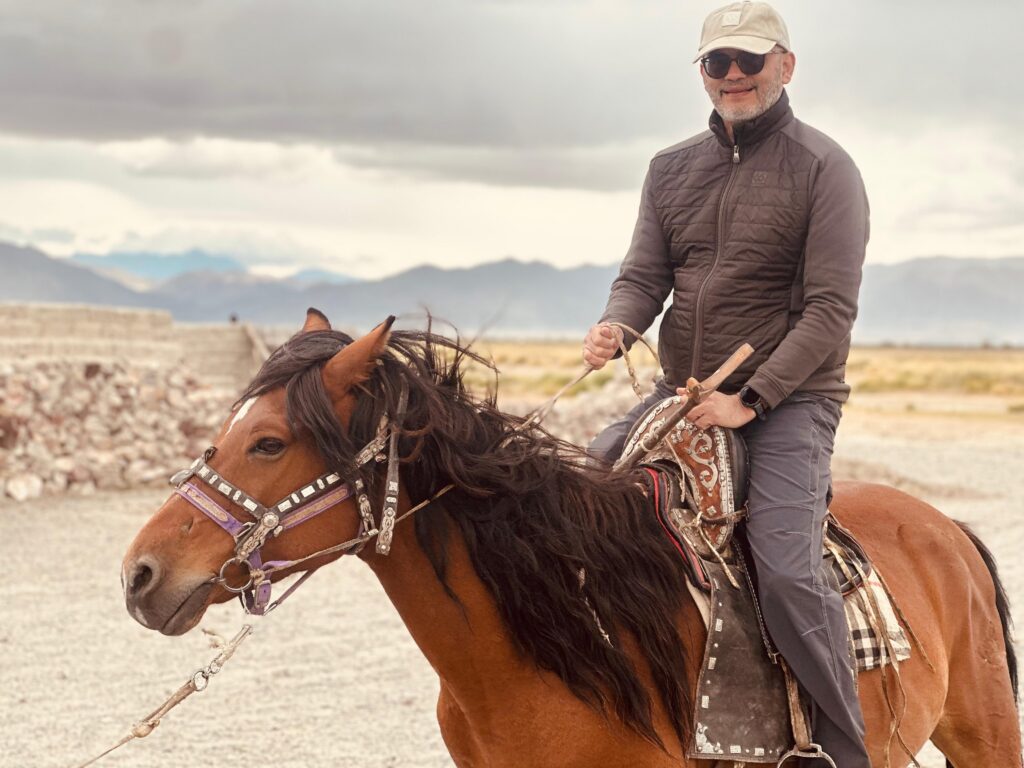
Mongolia, the 18th largest country in the world, has 21 provinces with its capital Ulaanbaatar administered separately. Despite covering such a massive area, it is also the most sparsely populated country on earth—just under 2 people per sq. km. Out of a population of 3.5 million, nearly 2.5 million reside in Ulaanbaatar alone. The country’s soul lies in its endless landscapes, the Gobi Desert, pristine wilderness and rare wildlife including snow leopards, wild Bactrian double humped camels and the world’s last truly wild horses – the Przewalski. Hustai National Park offers eco-tourism opportunities to encounter these rare species.
Ulaanbaatar – The Golden Capital
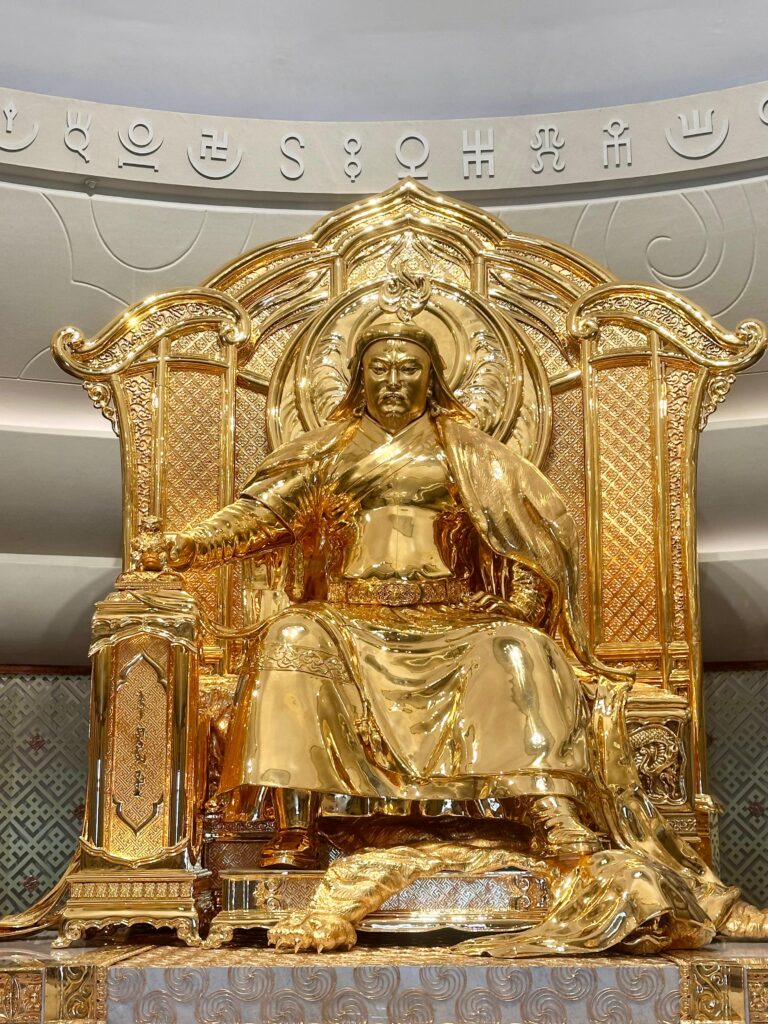
Most journeys into Mongolia begin in Ulaanbaatar, a city known for its extreme winters, where temperatures can plummet to -30°C. Mongolia is best visited between late April and October, with the peak months being May to September when conditions are more favorable.
Ulaanbaatar is chaotic yet intriguing. The airport lies 2.5–3.5 hours from the city center and the heart of the city is Sukhbaatar Square, surrounded by government buildings and museums. For first-time visitors, the Museum of Chinggis Khan is a must, showcasing Mongolia’s deep history dating back to the 3rd century BC. Another highlight is the Gandan Monastery, home to towering Buddha statues and sacred figures like the Ayusha God, symbolizing health and prosperity. Dalai Lama and Mongolia share a centuries-old spiritual connection, beginning when the Mongol leader Altan Khan gave the title “Dalai Lama” to Sonam Gyatso, the Third Dalai Lama, in the 16th century
Colors hold special significance in Mongolian culture:
- Blue: respect, the eternal sky
- Yellow: enlightenment
- White: purity, the mother figure
- Green: the earth
- Red: fire, strength and love
Interestingly, the Mongolian script is traditionally written in vertical lines from top to bottom, flowing in lines from left to right – one of the world’s rare writing systems.
Nomadic Culture – Life Unchanged for Centuries
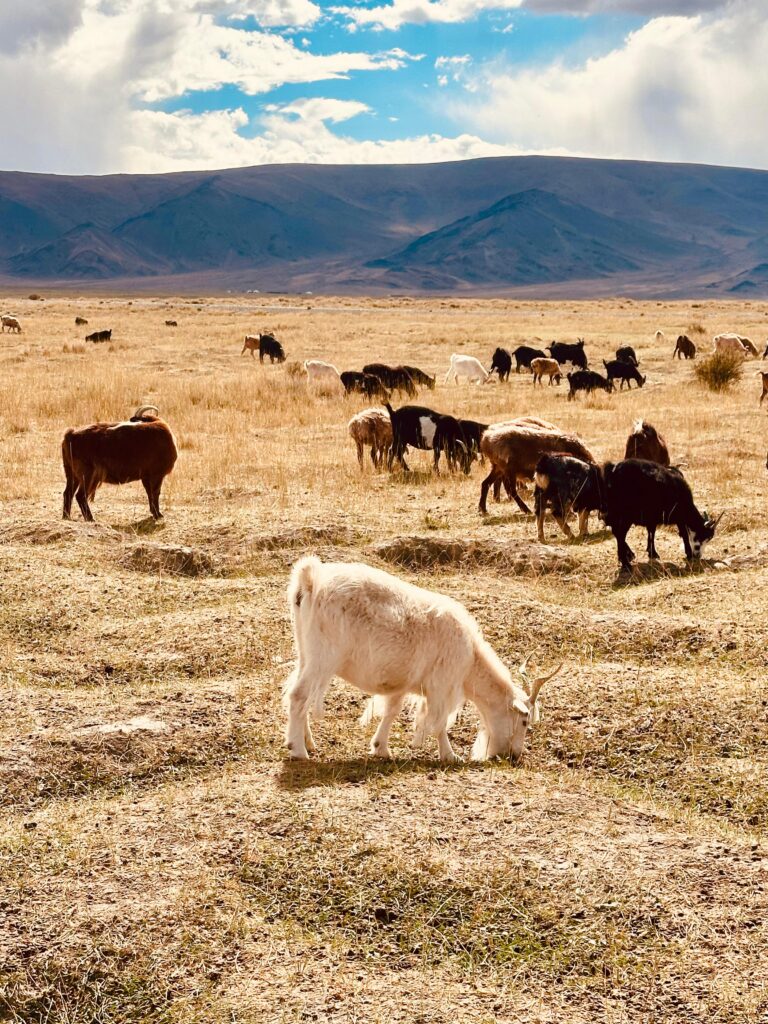
Mongolia is one of the last places on earth where true nomadic life continues. Families move with their herds, living in gers (yurts) and relying on livestock for survival. The country has 4.5 million horses and over 65 million livestock including sheep, goats, camels and yaks. Mongolian cashmere—renowned as some of the world’s finest—comes from its 25 million goats.
The Naadam Festival, held in July, celebrates this heritage through traditional “three manly games”: wrestling, horse racing and archery, alongside music, dance and parades. Beyond festivals, nomadic hospitality is legendary—warm, authentic and rooted in simplicity.
Western Mongolia – Where Eagles Rule the Sky
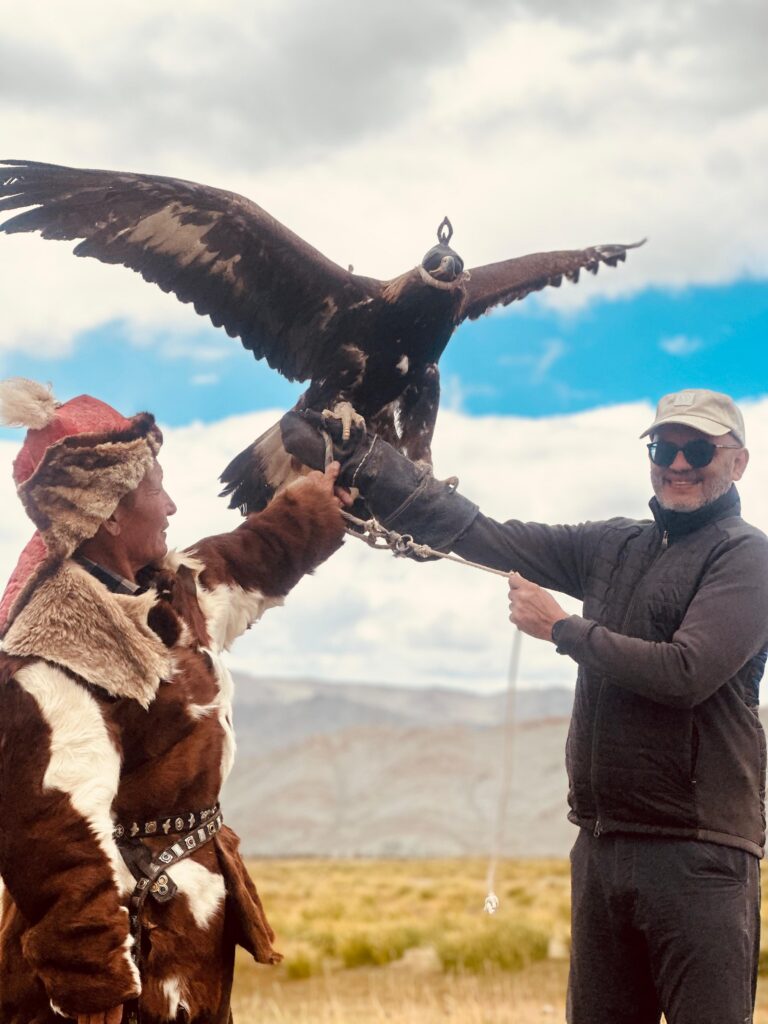
One of the main reasons for my trip was to explore Western Mongolia, especially Bayan-Ölgii province, home to the Kazakh nomads. The region is famous for eagle hunters, who have been training golden eagles for over 2,000 years to hunt foxes and wolves. Meeting one such hunter, Mr. Pashkhan, a seventh-generation eagle master, was an unforgettable experience. Watching his family’s traditions, from horseback riding to eagle training, felt like stepping back in time.
From Ulaanbaatar, we flew two hours to Ölgii, a small airport where we were welcomed by local Kazakh dancers. From there, the landscape unfolded into endless steppes, red cliffs, glacial rivers and snow-capped peaks of the Altai Mountains, some rising over 4,300 meters and lying close to Russia and Kazakhstan.
Life in the Wild – Camps, Valleys & Silence
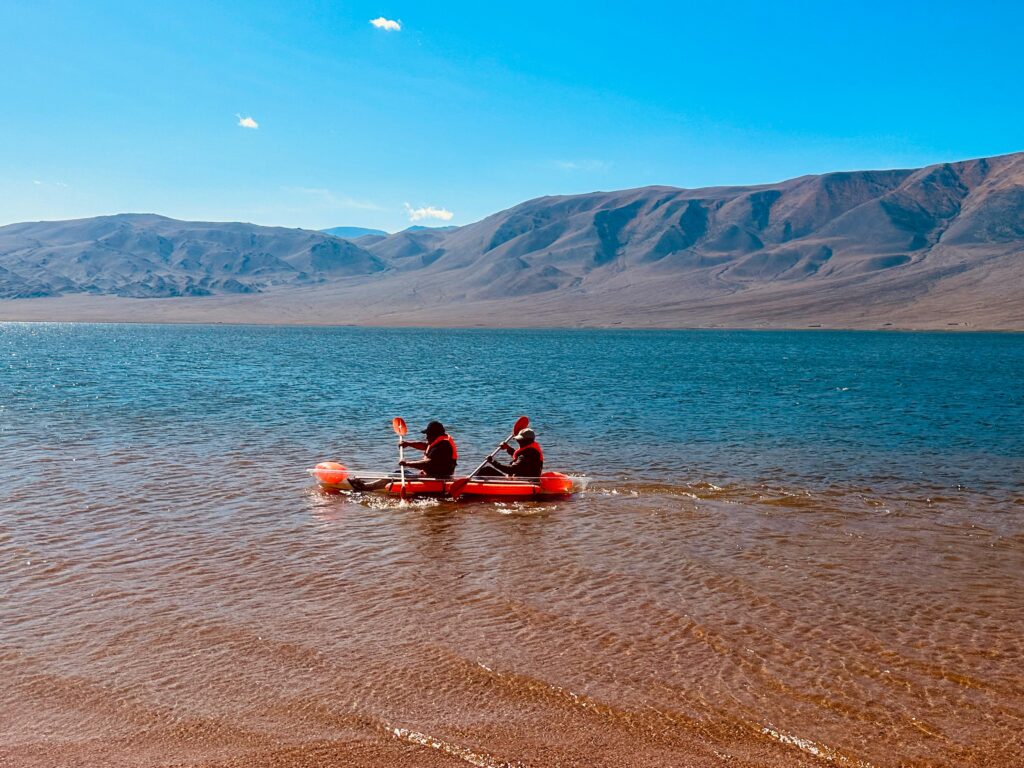
Our journey in the west was entirely off-road, traversing valleys and mountains in 4×4 vehicles. We stayed in a beautifully equipped camp at 1,830 meters altitude—complete with telescopes, archery, yoga mats and even kayaking on Bayan Lake. The night skies were breathtaking, the Milky Way clearly visible without telescopes.
Highlights included:
- Tsul Ulaan Valley – striking red rock cliffs
- Tsambagarav Mountain & National Park – 1,100 sq. km of raw wilderness
- Tavan Belchir Waterfall – glacier-fed, purest drinking water
- Friendship Mountain – with surreal tea breaks in the middle of nowhere
- Khuvsgul Lake – the sapphire gem of Mongolia, offering serenity and meditation
We also visited Kazakh families, tasting fresh apples grown in harsh climates and witnessing true nomadic hospitality. Simplicity and authenticity defined every encounter.
Culture, Spirituality & Connection

Mongolia is not just about landscapes—it is deeply spiritual. We experienced shamanic traditions, meditated in valleys and learned about Buddhist influences. At museums, we saw unique exhibits like the God of Coral Face, the Green Tara (protector of mothers and children) and ancient Deer Stones, 95% of which are of Mongolian origin and protected by UNESCO.
Mining and agriculture also play key roles in Mongolia’s economy, with wheat, beer, vodka and meat products largely exported to China. Yet despite modernization, traditional ways of life remain untouched in large parts of the country.
Why Visit Mongolia?
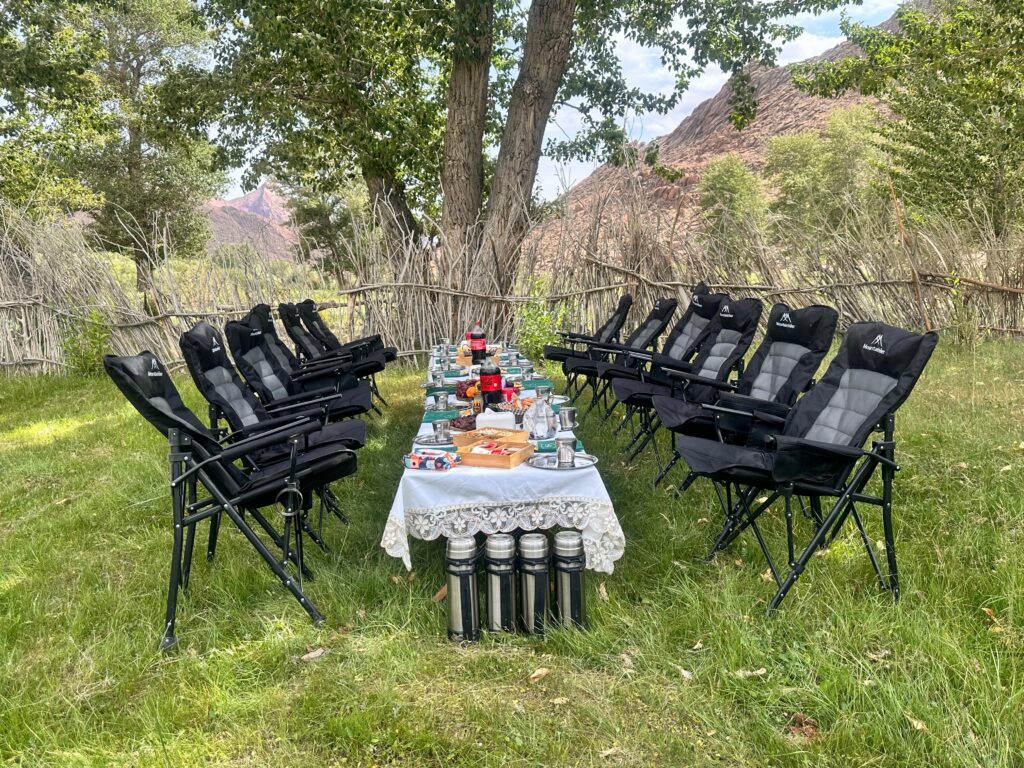
Mongolia is not a destination for luxury seekers or city lovers—it is for travelers who crave:
- Vast wilderness & silence
- Nomadic hospitality & culture
- Adventure ,off the beaten path
- Spiritual reflection & simplicity
Standing under the eternal blue sky, surrounded by mountains, valleys and herds of animals, you realize how small we are compared to the vastness of nature. Mongolia invites you to slow down, meditate and appreciate the raw beauty of our planet.
And for those ready to explore beyond the obvious, Namaste Tourism can help curate an authentic and unforgettable Mongolian journey—just as I was fortunate to experience.
✨ Mongolia isn’t just a place you visit. It’s a land that transforms the way you see the world.


Very well written n interesting blog Subhash. I will definitely travel to Mongolia next year.